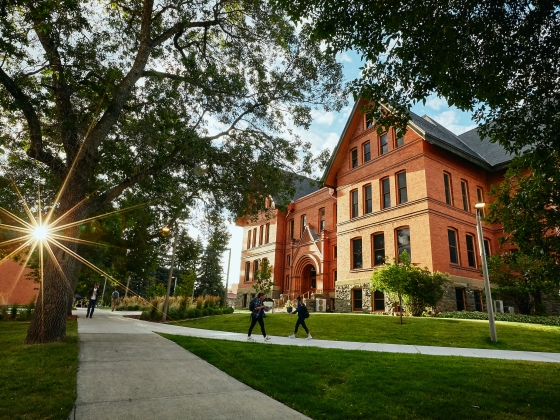When Montana State University’s new QCORE facility opens its doors later this month, it will do so with the help of around 60 outside organizations, companies and individuals – including $44.7 million from the U.S. Air Force Research Laboratory, or AFRL.
The 12,600-square-foot scientific facility, located in the EngineWorks building at 2425 Technology Blvd. on MSU’s Innovation Campus, will host an open house from 3 to 6 p.m., Friday, Aug. 22, that’s free and open to the public.
QCORE, an acronym for Quantum Collaborative Research and Education, is an interdisciplinary research facility in MSU’s College of Letters and Science dedicated to the study of quantum computing.
“We’re leading Montana’s transformation into a global powerhouse for quantum-enabled technologies by 2035 by fostering economic growth, academic excellence and developing a resilient, future-focused workforce,” said Jayne Morrow, director of QCORE. “These capabilities are not just for research. These investments create entirely new computing and networking infrastructure for the state of Montana.”
In addition to Friday’s open house, QCORE will celebrate its opening with a three-day Grand Challenges in Quantum Systems Summit beginning Aug. 20. The summit will feature keynote addresses from Michael J. Hayduk, deputy director and information directorate of the AFRL, and Jacob Taylor, from the Institute for Advanced Computer Studies at the University of Maryland.
The event will also feature panel discussions and presentations by more than 25 individuals from Montana and around the world representing industry and academia, including from MSU, as well as participation by around 35 companies and organizations.
“The purpose of the summit is to unite with partners and stakeholders from around the world to identify and address the grand challenges in quantum systems where MSU’s ecosystem can uniquely drive solutions,” Morrow said.
QCORE began to take form after MSU received a $26.7 million grant from the AFRL in 2023. The funding purchased specialized equipment to test prototype quantum components in the extremely cold environments in which some of them operate.
Morrow said MSU is the world’s first university to have a Rigetti Novera superconducting quantum computer on site, and it’s the first university in the U.S. with an ORCA photonic quantum computer. QCORE has one of only five quantum network test beds in the world and, according to Morrow, is one of only seven organizations in the world to house two different types of quantum computers: photonic and superconducting.
MSU’s photonics-based Spectrum Lab, which is part of QCORE, also received around $18 million from AFRL to create a new multi-node network that’s part traditional networking and part quantum networking, Morrow said.
Quantum physics deals with the behavior of very small particles, smaller even than the protons and neutrons most people know as the parts that make up atoms. Scientists – including those at MSU’s Spectrum Lab and MonArk Quantum Foundry – are discovering how to manipulate quantum particles to create faster, more sensitive, more precise and more secure systems in electronics, including sensors, location systems, computers and medical equipment.
Two of the challenges facing the emerging field of quantum computing are the sheer size of the components and energy consumption. “These are challenging technical hardware issues, and that requires technical hardware solutions. Montana State University and QCORE are uniquely well-suited to help Montana’s industry address them,” Morrow said.
Over the past two decades, MSU has helped to establish a network of photonics and cryogenics companies in and around Bozeman, which are expected to be integral to cultivating advances in quantum research and private industries with strong workforce development.
Part of QCORE’s mission will be to nurture scientists and entrepreneurs attempting to incorporate those advances into useful components and devices, Morrow said. QCORE’s mission also includes research translation, providing a business incubator for startups and developing workforce education programs from K-12 up. QCORE has signed either sponsored-research partnerships or memoranda of understanding with 15 companies, Morrow said.
“We’re envisioning ourselves as a research facility that’s really got a lot of hard science built into it, but which is also directed at meeting the needs of industry,” she said. “But we also understand it’s important to connect this emerging field of quantum with the opportunities in our local communities around Montana. We have sent quantum kits to over 70 schools around Montana to give teachers resources to help kids engage in quantum systems and supported artists of all ages from around Montana to create Sunprints, which harness quantum mechanics to generate beautiful images.”
MSU senior Jack Schnepf, who is expected to graduate in December with a BFA in studio arts, created a series of paintings for the QCORE facility, which collectively comprise an installation titled, “The Shape of Uncertainty.” Schnepf is originally from Snoqualmie, Washington.





